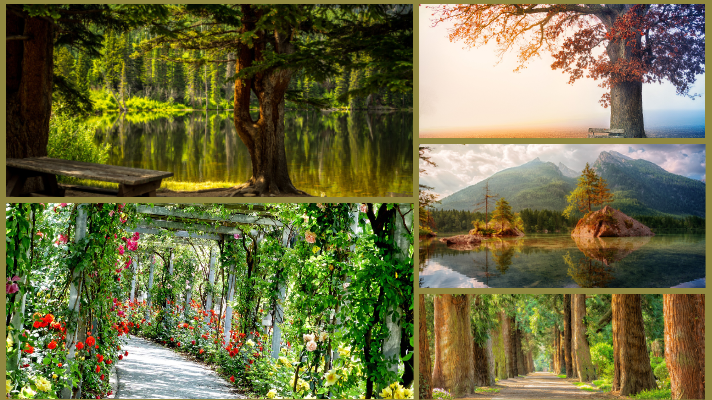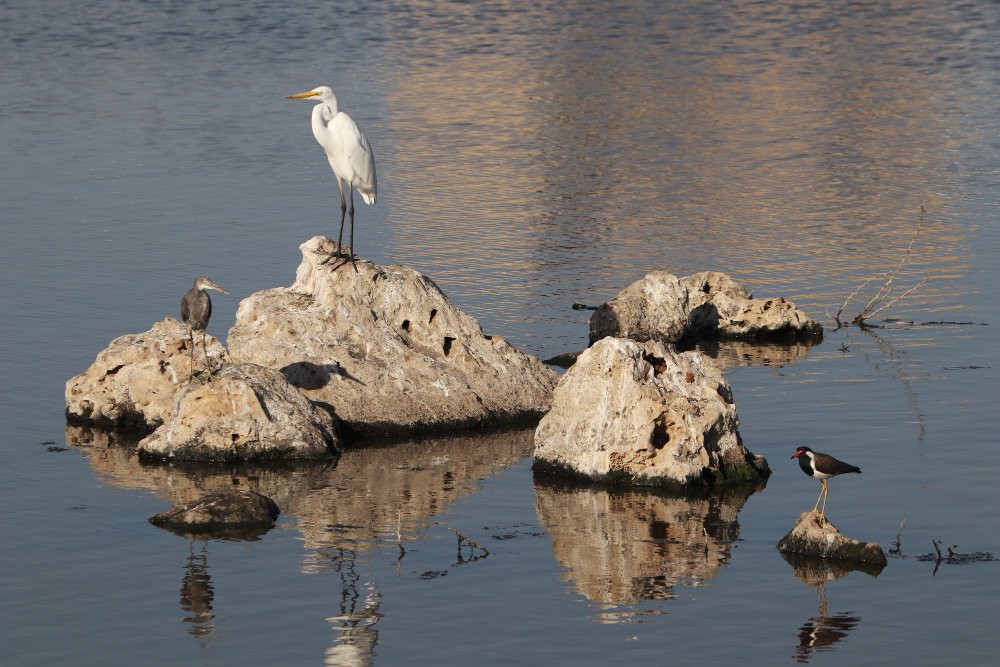Northeast Greenland National Park (Greenland)
Northeast Greenland National Park is a vast protected area located in Greenland, the world’s largest island. It is also known as “Kalaallit Nunaanni nuna eqqissisimatitaq” in the Greenlandic language. Covering an area of approximately 972,000 square kilometers (375,000 square miles), it is the world’s largest national park.
Established in 1974, Northeast Greenland National Park was created to preserve the unique Arctic wilderness and ecosystems found in the region. The park spans across various landscapes, including glaciers, fjords, ice caps, mountains, and tundra. It is characterized by its pristine beauty and remote, untouched nature.
The park is uninhabited, and there are no permanent settlements within its boundaries. However, it is home to a diverse range of wildlife, including polar bears, musk oxen, Arctic foxes, reindeer, walruses, and numerous bird species. Marine mammals such as whales, seals, and narwhals can also be found in the surrounding waters.
Northeast Greenland National Park is primarily accessible by boat or by helicopter, as there are no roads or infrastructure for visitors. It is a popular destination for adventure tourism, attracting visitors interested in wildlife observation, hiking, camping, and exploring the Arctic environment. The park offers opportunities for scientific research and serves as an important site for studying climate change and its impacts on the Arctic.
Due to its remote location and challenging climate, visiting Northeast Greenland National Park requires careful planning and preparation. Visitors must respect the park’s regulations and guidelines to ensure minimal impact on the fragile ecosystems and wildlife. It is advised to visit with experienced guides or join organized expeditions for a safe and responsible exploration of this remarkable natural treasure.
Taman Negara National Park (Malaysia)
Taman Negara National Park is a vast protected area located in Malaysia. It is one of the oldest rainforests in the world and is renowned for its biodiversity and natural beauty. Here’s some information about Taman Negara National Park:
Location: Taman Negara National Park is situated in Peninsular Malaysia, covering parts of Pahang, Kelantan, and Terengganu states. It spans across an area of approximately 4,343 square kilometers (1,677 square miles).
History: Established in 1938, Taman Negara is one of the oldest national parks in Malaysia. It was originally named King George V National Park, but after Malaysia gained independence, it was renamed Taman Negara, which means “national park” in Malay.
Rainforest: Taman Negara is predominantly covered by tropical rainforest, which is estimated to be around 130 million years old. It is considered one of the most ancient rainforests in the world, even older than the Amazon rainforest.
Biodiversity: The national park is home to a remarkable variety of plant and animal species. It supports an incredible array of flora, including rare orchids, ferns, and towering trees. The park also shelters numerous animal species like tigers, elephants, tapirs, gibbons, macaques, and various bird species.
Canopy Walkway: One of the popular attractions in Taman Negara is the Canopy Walkway, which allows visitors to experience the rainforest from a different perspective. The walkway is suspended high above the ground, offering panoramic views of the surrounding forest and wildlife.
Activities: Taman Negara offers various activities for visitors to enjoy. These include jungle trekking, wildlife spotting, birdwatching, river cruises, fishing, camping, and night safaris. Visitors can also engage in adventurous activities like rapid shooting and cave exploration.
Indigenous Communities: Within the national park, there are several indigenous communities, such as the Orang Asli tribes, who have lived in the area for centuries. These tribes have deep knowledge of the rainforest and its resources and offer cultural experiences for visitors to learn about their way of life.
Access: The park can be accessed from different entry points, such as Kuala Tahan in Pahang or Merapoh in Kelantan. There are organized tours and accommodations available within the park, including chalets, guesthouses, and campsites.
When visiting Taman Negara National Park, it’s important to follow the guidelines provided by the park authorities to preserve the natural environment and respect the local communities.
Bogd Khan Uul National Park (Mongolia)
Bogd Khan Uul National Park is a protected area located in Mongolia. It is situated in the southern part of the capital city, Ulaanbaatar, and covers an area of about 42,500 hectares (105,000 acres). The park was established in 1778, making it one of the oldest national parks in the world.
Bogd Khan Uul National Park is named after Bogd Khan, the religious and political leader of Mongolia in the early 20th century. The park is primarily known for its natural beauty and diverse ecosystems. It encompasses mountains, forests, meadows, and rivers, offering a range of habitats for various plant and animal species.
The park’s terrain is characterized by the Bogd Khan Mountain range, which stretches from east to west. The highest peak in the range, Tsetsee Gun, reaches an elevation of 2,250 meters (7,382 feet). The mountain slopes are covered with mixed forests, including Siberian pine, larch, birch, and aspen trees.
Bogd Khan Uul National Park is home to a variety of wildlife, including several endangered and rare species. Among the notable animals found in the park are the Siberian ibex, red deer, roe deer, wild boar, Eurasian lynx, and numerous bird species. The park is also known for its rich floral diversity, with over 600 species of plants recorded.
Aside from its ecological value, Bogd Khan Uul National Park holds cultural and historical significance. It contains several historical sites, including monasteries, temples, and the winter palace of Bogd Khan, which is now a museum. These sites offer insights into Mongolia’s Buddhist heritage and the country’s royal past.
The park attracts visitors who enjoy hiking, mountain climbing, and wildlife observation. There are several trails and routes available for exploring the park’s natural beauty, ranging from easy walks to more challenging treks. Additionally, the park provides opportunities for camping and picnicking in designated areas.
Bogd Khan Uul National Park serves as an important recreational and conservation area, offering a peaceful escape from the urban environment of Ulaanbaatar. Its diverse landscapes, rich biodiversity, and cultural significance make it a valuable natural asset in Mongolia.
Khao Yai National Park (Thailand)
Khao Yai National Park is a popular national park located in Thailand. It is one of the country’s oldest and most visited national parks, covering an area of approximately 2,168 square kilometers (837 square miles). Khao Yai National Park is situated in the northeastern part of Thailand, spanning across four provinces: Nakhon Ratchasima, Saraburi, Prachinburi, and Nakhon Nayok.
Established in 1962, Khao Yai National Park was Thailand’s first national park and is recognized as a UNESCO World Heritage Site. The park is known for its diverse ecosystems, including dense forests, grasslands, waterfalls, and mountain ranges. It is also home to a rich variety of wildlife, including elephants, tigers, gibbons, deer, bears, and numerous bird species.
Tourists visit Khao Yai National Park for its natural beauty, wildlife spotting opportunities, and outdoor activities. The park offers several hiking trails, allowing visitors to explore its lush landscapes and discover its scenic viewpoints. One of the popular attractions within the park is Haew Narok Waterfall, a stunning waterfall that cascades over 150 meters (492 feet). There are also other waterfalls, such as Haew Suwat, which gained fame after being featured in the movie “The Beach.”
In addition to hiking, visitors can go on wildlife watching tours, take guided night safaris to observe nocturnal animals, or explore the park’s caves. Khao Yai National Park provides a range of accommodation options, including campsites and bungalows, for those who wish to spend more time immersed in nature.
It’s worth noting that as a protected area, certain rules and regulations are in place to preserve the park’s ecosystem. Visitors are encouraged to follow these guidelines, such as not littering, staying on designated trails, and respecting the wildlife.
Gunung Leuser National Park (Indonesia)
Gunung Leuser National Park is a national park located in the Indonesian provinces of Aceh and North Sumatra on the island of Sumatra. It is named after Mount Leuser, which is one of the prominent peaks within the park. The park spans an area of approximately 7,927 square kilometers (3,063 square miles) and is part of the larger Leuser Ecosystem, which is considered one of the most biodiverse areas in Southeast Asia.
Established in 1980, Gunung Leuser National Park is recognized as a UNESCO World Heritage Site. The park is known for its rich biodiversity, encompassing diverse ecosystems such as lowland rainforests, montane forests, and alpine meadows. It is home to various endangered species, including the Sumatran orangutan, Sumatran tiger, Sumatran rhinoceros, and Sumatran elephant. The park also harbors a wide range of bird species, reptiles, amphibians, and plant life.
Gunung Leuser National Park offers opportunities for eco-tourism and outdoor activities, such as trekking, wildlife watching, and exploring the park’s natural beauty. Visitors can engage in guided hikes to observe wildlife, visit waterfalls, and experience the lush rainforest environment. The park has designated trails and camping areas for overnight stays.
Conservation efforts are crucial in Gunung Leuser National Park due to threats such as illegal logging, poaching, and encroachment by human settlements. Local authorities, along with national and international organizations, work together to protect the park’s unique ecosystem and promote sustainable practices. This includes initiatives to involve local communities in conservation efforts and promote eco-friendly tourism practices.
Gunung Leuser National Park is not only significant for its ecological importance but also for its contribution to scientific research and understanding of tropical rainforest ecosystems. It remains a vital sanctuary for numerous species and plays a crucial role in preserving the natural heritage of Indonesia.
Jiuzhaigou Valley National Park (China)
Jiuzhaigou Valley National Park is a stunning natural attraction located in the Aba Tibetan and Qiang Autonomous Prefecture in Sichuan Province, China. It is renowned for its breathtaking natural beauty, including colorful lakes, waterfalls, snow-capped peaks, and lush forests. The park was designated as a UNESCO World Heritage site in 1992 and is also a UNESCO Biosphere Reserve.
Key Features of Jiuzhaigou Valley National Park:
Scenic Beauty: Jiuzhaigou Valley is famous for its crystal-clear turquoise lakes, which are the result of mineral-rich waters flowing through the area. The park features numerous lakes, such as Long Lake, Five-Color Pond, and Panda Lake, each with its distinct colors and unique characteristics. The surrounding landscapes, with snow-capped peaks and dense forests, add to the park’s scenic charm.
Waterfalls: The park boasts several impressive waterfalls cascading down from the mountains. Nuorilang Waterfall is the widest waterfall in China, while Pearl Shoal Waterfall and Shuzheng Waterfall are equally breathtaking. These waterfalls offer fantastic photo opportunities and add to the park’s overall beauty.
Flora and Fauna: Jiuzhaigou Valley is home to a diverse range of plant and animal species. The park’s forests are filled with ancient trees, including birch, spruce, and bamboo. Many endangered and rare species inhabit the area, such as the giant panda, golden snub-nosed monkey, and Sichuan takin. Birdwatchers also visit the park to spot various avian species.
Cultural Heritage: The region surrounding Jiuzhaigou Valley National Park is inhabited by ethnic Tibetans and the Qiang people, who have a rich cultural heritage. Visitors can explore traditional villages, interact with locals, and experience their unique customs, cuisine, and handicrafts.
Trekking and Hiking: The park offers numerous trails and pathways, allowing visitors to explore its scenic wonders on foot. Trekking through the park’s valleys, lakes, and waterfalls provides an up-close experience of its natural splendor. The most famous trail is the Zharu Valley, which offers breathtaking views and encounters with wildlife.
It’s worth noting that in August 2017, Jiuzhaigou Valley National Park was struck by a powerful earthquake, causing significant damage to the park’s infrastructure and ecosystems. However, restoration efforts have been underway to repair and reopen the park to visitors, so it is essential to check for the latest information regarding its accessibility and conditions before planning a trip.
Kinabalu Park (Malaysia)
Kinabalu Park is a national park located in the state of Sabah, Malaysia. It is known for its incredible biodiversity and is one of the most popular tourist destinations in the country. Here’s some information about Kinabalu Park:
Mount Kinabalu: The park is home to Mount Kinabalu, which is the highest peak in Southeast Asia, standing at 4,095 meters (13,435 feet) above sea level. It is a UNESCO World Heritage Site and a prominent feature of the park.
Biodiversity: Kinabalu Park is renowned for its rich plant and animal life. It boasts a staggering variety of flora, including over 5,000 species of plants, many of which are endemic to the region. The park also supports a diverse array of wildlife, such as orangutans, gibbons, elephants, and various bird species.
Trails and Hiking: The park offers a range of hiking trails catering to different levels of fitness and experience. The most popular trail is the Summit Trail, which leads to the peak of Mount Kinabalu. It is a challenging climb but rewards hikers with breathtaking views of the surrounding landscapes.
Poring Hot Springs: Located within Kinabalu Park is the Poring Hot Springs, a natural hot spring complex. Visitors can soak in the therapeutic hot mineral baths and enjoy the surrounding lush rainforest. The area also features a canopy walkway, butterfly farm, and an orchid conservation center.
Botanical Gardens: The park encompasses a Botanical Garden that showcases various plant species found in the area. Visitors can explore the garden and learn about the unique flora of Borneo, including carnivorous pitcher plants and colorful orchids.
Wildlife Spotting: Kinabalu Park provides opportunities for wildlife enthusiasts to observe and photograph a variety of animals in their natural habitat. Guided tours are available for visitors to learn about the park’s diverse ecosystems and spot elusive creatures like the Bornean pygmy elephant or the proboscis monkey.
Accommodation: The park offers a range of accommodation options, including lodges, guesthouses, and campsites. There are also restaurants and facilities available to cater to visitors’ needs.
When planning a visit to Kinabalu Park, it is advisable to check the park’s regulations, obtain necessary permits for climbing Mount Kinabalu, and prepare adequately for the altitude and challenging terrain. Additionally, respecting the park’s conservation efforts and following designated trails is important to preserve the natural beauty of the area.
Phong Nha-Ke Bang National Park (Vietnam)
Phong Nha-Ke Bang National Park is a UNESCO World Heritage site located in the Quang Binh province of central Vietnam. It is known for its spectacular karst mountains, caves, and rich biodiversity. Here’s some information about Phong Nha-Ke Bang National Park:
Geography: The park covers an area of approximately 885 square kilometers and is situated in the Annamite Mountain Range. It is characterized by limestone karst formations, which have been shaped by millions of years of erosion.
Caves: Phong Nha-Ke Bang National Park is home to some of the world’s most stunning caves. The park is famous for Hang Son Doong, the largest known cave in the world, which was discovered in 2009. Other notable caves include Phong Nha Cave, Paradise Cave, and Dark Cave. These caves are renowned for their unique geological features, impressive stalactites and stalagmites, and underground rivers.
Biodiversity: The park boasts a high level of biodiversity, with a diverse range of plant and animal species. It is home to over 2,000 plant species, including many endemic and rare species. The park is also a habitat for numerous animal species, such as tigers, elephants, langurs, and various species of reptiles and birds.
Conservation and UNESCO World Heritage status: Phong Nha-Ke Bang National Park was designated as a UNESCO World Heritage site in 2003, recognizing its exceptional geological and biological values. The park is protected by the Vietnamese government and various conservation efforts are in place to preserve its unique ecosystems.
Tourism: The park has become a popular tourist destination for nature enthusiasts and adventure seekers. Visitors can explore the caves on guided tours, go hiking or biking in the surrounding jungle, and enjoy the stunning natural scenery. The park offers a range of activities, from easy walks to more challenging treks and cave expeditions.
Sustainable tourism: In recent years, there has been an increased emphasis on sustainable tourism practices in Phong Nha-Ke Bang National Park. Efforts are being made to promote responsible tourism, minimize environmental impact, and support the local communities through eco-friendly initiatives and community-based tourism projects.
Phong Nha-Ke Bang National Park is a remarkable destination that showcases the beauty and geological wonders of Vietnam. It offers visitors a chance to immerse themselves in nature and explore the captivating underground world of caves.
Doi Inthanon National Park (Thailand)
Doi Inthanon National Park is a popular national park located in the Chiang Mai Province of northern Thailand. It is named after Doi Inthanon, the highest mountain in Thailand, which stands at an elevation of 2,565 meters (8,415 feet) above sea level. The park covers an area of approximately 482 square kilometers (186 square miles) and is known for its diverse flora, fauna, and stunning natural landscapes.
The national park is a part of the Himalayan mountain range and is characterized by its mountainous terrain, mist-covered peaks, and lush green forests. It is home to numerous species of birds, including some rare and endemic species, making it a popular destination for birdwatchers. Visitors can also find various species of mammals, reptiles, and insects in the park.
One of the main attractions of Doi Inthanon National Park is the summit of Doi Inthanon itself. Visitors can reach the summit by road, and there are several viewpoints along the way that offer breathtaking panoramic views of the surrounding mountains and valleys. At the summit, there are two chedis (stupas) dedicated to the King and Queen of Thailand, which are surrounded by beautiful gardens.
The park also features several waterfalls, such as Wachirathan Waterfall and Siriphum Waterfall, which cascade down the slopes of the mountains. These waterfalls offer opportunities for swimming, picnicking, and relaxation in a serene natural setting.
Doi Inthanon National Park is a great place for hiking and trekking, with a variety of trails catering to different skill levels. The trails take visitors through dense forests, past cascading streams, and to remote hill tribe villages, providing a glimpse into the traditional way of life of the local communities.
Visiting Doi Inthanon National Park allows travelers to experience the natural beauty of northern Thailand, escape the bustling city life, and immerse themselves in a peaceful and tranquil environment. It is advisable to check the weather conditions and prepare accordingly, as the higher elevations can be significantly cooler than the surrounding areas.
Kaziranga National Park (India)
Kaziranga National Park is a renowned wildlife sanctuary located in the northeastern state of Assam, India. It is one of the most significant protected areas in the country and was declared a UNESCO World Heritage Site in 1985. Spanning an area of approximately 430 square kilometers (166 square miles), the park is known for its exceptional biodiversity and, particularly, its population of Indian rhinoceroses.
Here are some key features and information about Kaziranga National Park:
Wildlife: Kaziranga is home to a diverse range of flora and fauna. It is famous for its population of the great Indian one-horned rhinoceros, which is one of the park’s main attractions. Other notable wildlife species found here include Asian elephants, Bengal tigers, wild water buffaloes, swamp deer, and various species of birds, including migratory birds.
Vegetation: The park consists of tall elephant grass, marshland, and dense tropical broadleaf forests. These habitats provide excellent cover and food sources for the park’s wildlife.
Conservation: Kaziranga National Park plays a crucial role in conserving endangered species, particularly the Indian rhinoceros. The park has been successful in implementing conservation efforts, resulting in the significant growth of the rhino population over the years.
River and Ecosystem: The park is situated in the floodplain of the Brahmaputra River. The river and its tributaries create a unique ecosystem that supports the diverse wildlife of the region. The floodwaters help maintain the grasslands and wetlands, which are vital for the survival of several species.
Jeep and Elephant Safaris: Visitors to Kaziranga have the opportunity to explore the park through jeep and elephant safaris. These guided tours provide a chance to observe the wildlife up close and appreciate the park’s natural beauty.
Threats and Conservation Challenges: Kaziranga faces several challenges in wildlife conservation, including poaching, encroachment, and human-wildlife conflicts. Efforts are being made to address these issues through strict law enforcement, community engagement, and habitat management.
Importance of Kaziranga: The park holds immense ecological significance and is recognized as a biodiversity hotspot. It is an essential habitat for several endangered species and contributes to the overall conservation of wildlife in the region.
Visiting Kaziranga National Park offers a unique opportunity to witness a wide variety of wildlife in their natural habitat. It is a must-visit destination for nature lovers and wildlife enthusiasts, providing an unforgettable experience of India’s natural heritage.












